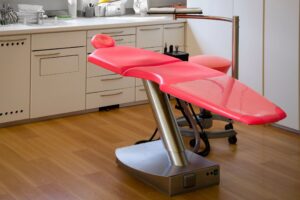Caring for Your Mouth After Surgery

Caring for Your Mouth After Surgery
Sometimes it is hard to remember all the after-care instructions post oral-surgery and it is not always easy to search through a packet or website to find the information you are looking for.
Refer to this article for a quick overview on what to do and what not to do after a tooth extraction!
What happens after a tooth extraction?
When the procedure is complete, the oral surgeon will place gauze over the extraction site and will have you bite down to help slow the bleeding so a blood clot can form. A blood clot is completely normal and actually promotes healing and reduces the risk of dry sockets! Once the bleeding has slowed down you will then be able to remove the gauze. This will typically take about a half an hour or so.
You are only to use more gauze IF the bleeding persists. We recommend moistening the gauze with tap water for more comfortable positioning and keeping the gauze on the surgical site for another 30 minutes. Intermittent bleeding overnight is normal so cover your pillow with a towel, but bleeding should never be severe or uncontrolled, if this happens, please go to your local emergency room.
What are the “DO’s” for after care?
- Brush teeth after 24 hours. By the second and third day you should be back to your normal oral hygiene routine.
- Rinse gently with warm salt water by titling your head side to side and letting the rinse fall out of your mouth. Do this 2-3 times daily.
- Use a cold pack and apply firmly to cheek adjacent to surgical area to help reduce swelling. This should be applied 20 minutes on and 20 minutes off during the first 24-48 hours of surgery. AFTER 48 hours, you may use a warm compress instead if needed for stiffness and joint or muscle soreness.
- Eat soft foods that do not require much chewing such as scrambled eggs, mashed potatoes, pudding, or yogurt.
What are the “DON’T’s for after care?
- Do not probe the area with any objects and do not rinse vigorously.
- When rinsing, do not spit out the rinse.
- Do not smoke for at least 2 weeks after surgery.
- Do not use a straw for the first 2 weeks after surgery, 2 weeks is recommended.
- Do not eat hard, crunchy, or chewy foods such as popcorn, apples, seeds, or pizza.
If you do not follow these basic instructions, you could end up with a dry socket which is very painful! A dry socket is the term for when the clot is lost from the surgical site or never forms.
What are the warning signs of a dry socket?
- Worsening pain of mouth/face 3-7 days post-extraction
- Severe discomfort not relieved by pain medication
- Bad breath/foul taste
What do I do if I think I have a dry socket?
In most cases, dry sockets heal on their own! To help ease pain and tenderness try the following:
- Rinse and clean surgical area with warm salt water
- Use a plastic syringe to flush the area to remove any leftover food
- Place damp gauze on extraction site
- Take the medication instructed by the doctor
If you are a patient of Dr. Kemp or Dr. Lin and are experiencing severe pain and have already tried the tips listed above, give our office a call at (716) 362-4800 (OPTION 3) and our team will be happy to take a look and try to reduce the discomfort.
For more post-surgery instructions visit the link below:





